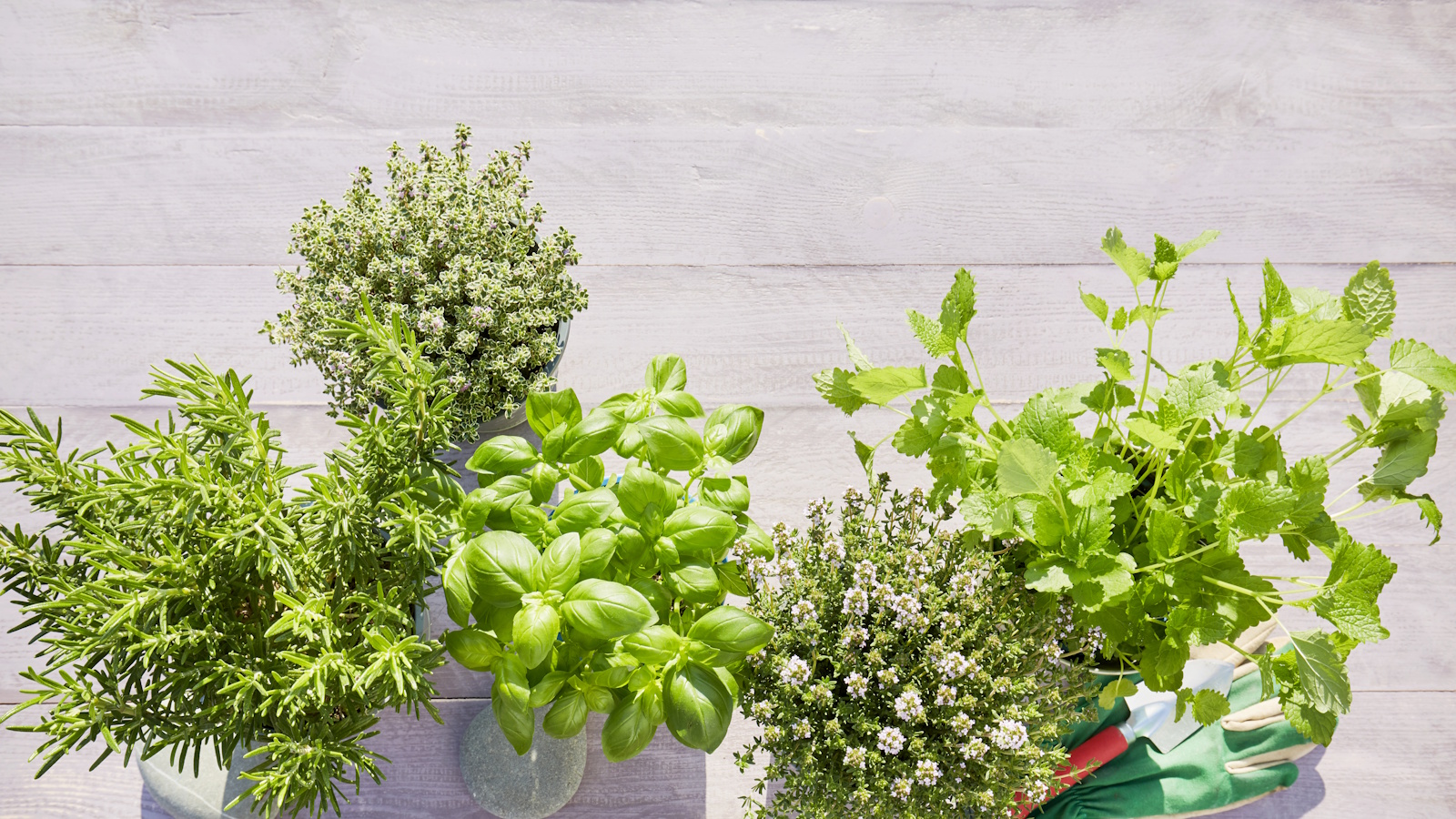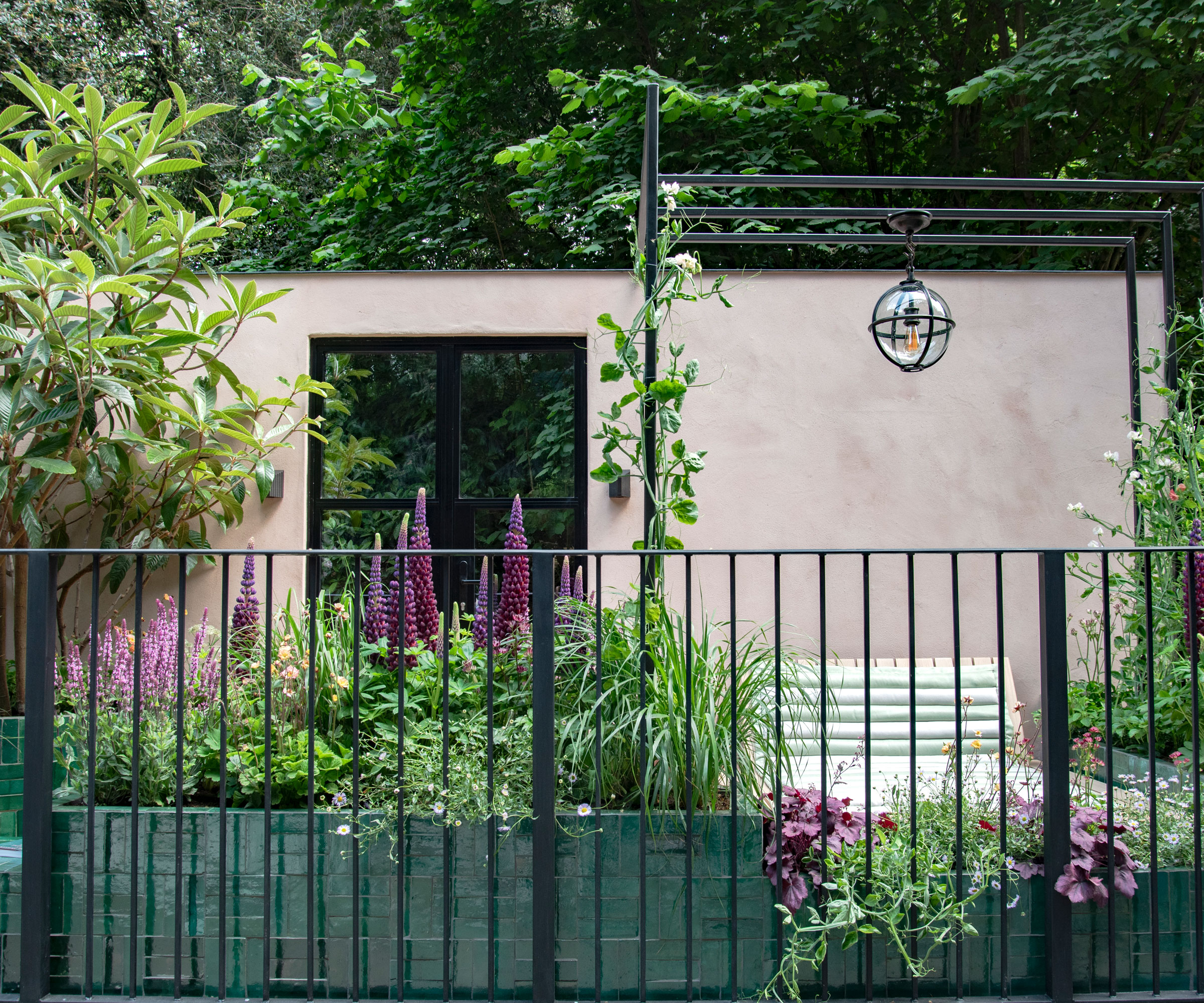
In every yard, large or minute, there are always spaces we want to cover, disguise or green up fast. We don’t always have the time to wait for climbers to grow, nor have the budget to invest in established trees.
This was an issue I faced in my garden, after I cleared a large bed that was previously choked with brambles, ivy and rambling, unattractive vines. I decided to dig it all out and start again from scratch, but before I can begin planting again in the fall I wanted to find a way to cover these large fence panels I had revealed by stripping away so many old plants.
I demonstrate exactly how I resolved this issue in a recent video for Homes & Gardens' social series, Petals & Roots. In the video, which you can watch below, I take you through each step and show you just how easy it is to replicate this garden fence idea.
How to green up a bare fence fast
I decided to use a number of small, hooked planters and fill them with a variety of fresh, potted herbs to create a vertical kitchen garden.
All you need for this are hanging planters, such as these white ones from Amazon, which come in a set of 10. (Check they have drainage holes before you buy them.)
I chose to fill them with herbs, because this fence is close to my kitchen and patio, so I wanted to be able to go out there and snip from this display each day.
I chose several mint varieties including apple, Indian, and chocolate peppermint; common thyme; lemon thyme; lemon verbena; sage; rosemary, and curry plant.
You can find a wide variety of live herb plants at Walmart, and lots of herb plant and seed choices at Burpee.
After hooking them over the fence panels, simply place your small herb pots inside, and arrange in a way that looks balanced and beautiful. For instance, if I have a trailing herb in the top left corner, I'd also place one in the bottom middle to balance the design.
Top tip: To maintain this display and keep it looking fresh and healthy there are two key things you need to do.
The first is to water the herb pots daily. On very hot days I would water first thing in the morning and in the evening, too.
Secondly, keep cutting from them as much as you can. This will encourage the plants to continue putting on fresh growth, and keep them looking lush and vibrant. Plus you get a constant supply of herbal tea in the process.
How to use this idea in small gardens

These kinds of planters are really versatile, and there are lots of ways you can recreate this idea, even without a large fence panel.
You can place hanging planters over the inside of your balcony or terrace. You could even get hold of a wooden pallet, stand this up on its end and use it to hook planters into.
I would opt to mount a pallet onto a wall if possible, to create interest higher up and give myself more space to grow, but you could sit it on the ground and ensure it doesn't fall by placing some heavy pots in front of it (or securing it at the back).
There are other options, too, such as stackable vertical planters like these, from Amazon, which you can attach to a fence or a wall. These are usually self watering modular systems, but you have a bit less freedom to move them if you want to change up your display.
These vintage-style hanging planters come in a range of different shades and have a rustic, cottage garden appeal.
A small watering can with a low spout is ideal for watering high up. I love the sleek, modern design of this one, plus is comes in lots of different colors.
These stackable vertical planters are self watering and ideal if you don't have a fence with horizontal slats, as I do. They look beautiful packed with herbs, but you could also grow lettuce and other leafy salad crops in them, as well as fruits such as strawberries.
Remember, your vertical garden can be a seasonal display that you can switch up in spring for miniature bulbs or primulas – to create your own version of an auricula theater.







